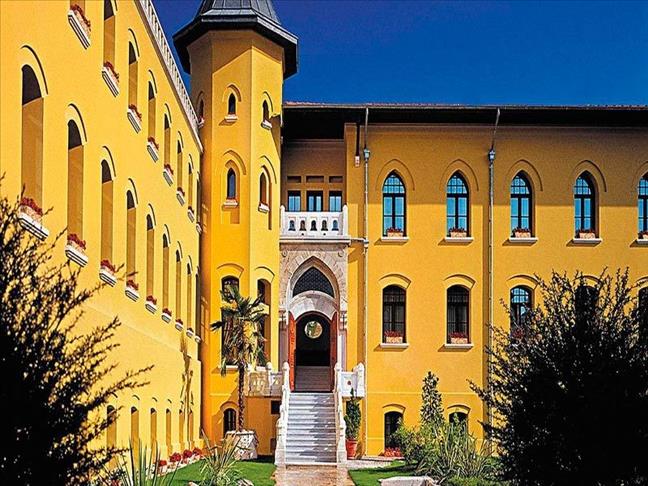
ISTANBUL, Turkey
By Nilay Kar
The first contemporary prison in the capital of the Ottoman Empire - Sultanahmet Prison was once a jailhouse which housed several notable inmates nearly a century ago. Now, It is a notable five-star luxury hotel, hosting many distinguished guests including world famous stars, well-known politicians and world leaders.
Situated in Istanbul's historic district of Sultanahmet on the peninsula, the prison's location is very special as it was constructed near the most breathtaking structures in Byzantine and Ottoman history. The 17th-century Blue Mosque, the 6th-century Hagia Sophia, the Basilica Cistern and the Ottoman palace of Topkapi are among the most significant.
The prison was constructed in 1918-1919, as an example of Turkish neo-classic architecture with an emphasis on pointed arches, ornate tiles, dramatic domes and towers. This style which emerged in 1919 was based on the artistic ideas of Ziya Gokalp, a famous Turkish writer and sociologist.
The jail was also located next to the city courthouse, which was constructed in 1845 initially as a university. An inscription in the Ottoman language on the main gate of the building, states that the name of the facility is the "Capital City Murder Jail."
In 1955-1956, when the building became run-down, the prison was abandoned and was used as a public storehouse. The inmates were transferred to Bayrampasa prison.
After a long period of neglect, a redevelopment project to convert the building into a hotel was planned due to the building's historical and architectural significance. What was once a dour fortress to imprison dissident Turkish writers and politicians, re-opened its doors as an intimate luxury hotel in 1996.
But some elements of the original prison can still be seen throughout the hotel; the original wooden doors, arched hallways, marble pillars, some carvings by inmates, and hand-painted tiles in the lobby. The tiles used extensively on the exterior facade are the works of Hafiz Mehmed Emin, a well-known artist of that period.
With the walls between former cells torn down to create spacious rooms lit by windows, and the central courtyard filled with plants and birdsong, the prison now represents the exact opposite of the place they knew: an alluring refuge, a place you would want to escape to rather than from.
The enclosed area, where prisoners once exercised, was designed as a multi-use space in order to meet all kinds of visitors' needs and now contains a restaurant and garden terrace.
The balance between Turkish tradition and cosmopolitan modernity has been carefully maintained. A symbol of the crescent moon on the marble floor reminds the visitor that this city was once at the heart of the Ottoman Empire. But, If this reinvented building still conspires to detain, it is by charm and comfort alone.
The architect of the building remains a mystery. "There are some records claiming the architect was Mimar Kemalettin Bey, others say the architect was Vedat Tek," Atilla Ozturk, General Manager of Astay Real Estate, told Anadolu Agency (AA) in his interview.
Along with the usual male prisoners, women and youths were occasionally detained there, along with a number of famous artists and political figures, including poet Nazım Hikmet, communist leader Mihri Belli, novelist Orhan Kemal, screenwriter Vedat Turkali, and Aziz Nesin, a controversial humourist who published over 100 books.
"There were many other prisons in other districts of Istanbul in that era but it [Sultanahmet Prison] operated as a distinguished prison. Many people from literature and the political world served their time here," Ozturk explained.
The century-old hotel, now called the 'Four Seasons', is award-winning for its top level service, cuisine and elegance. Conde Nast Traveller magazine in 2005 and Travel & Leisure magazine in 2007 chose the hotel as the best hotel in Europe. It has been presented with 36 awards up until today.
The hotel is special but it is not only hotel in terms of its historic background. There are also others examples of hotels, which have been converted from prisons all across the world.
The US, Latvia, Britain, Finland, Canada, the Netherlands and Slovenia also host similar kinds of hotels and hostels. The Het Arresthuis in the Netherlands, which once housed 105 prisoners but has been transformed into a luxury hotel, is one of the significant ones.
englishnews@aa.com.tr
Anadolu Agency website contains only a portion of the news stories offered to subscribers in the AA News Broadcasting System (HAS), and in summarized form. Please contact us for subscription options.

